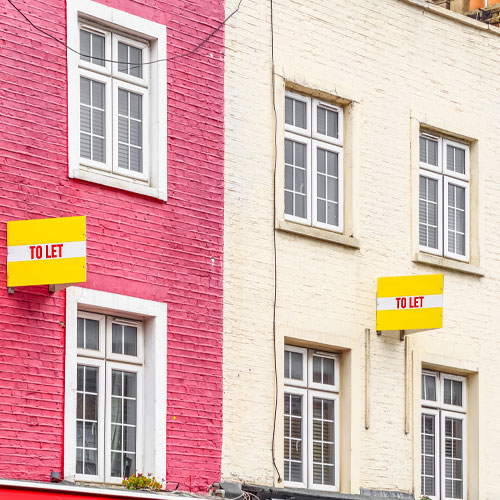
Landlord Building Insurance
Compare Landlord Building Insurance Quotes
- Complete one short form
- Quickly compare quotes
- Find a great deal today!

Compare landlord building insurance quotes from UK’s leading landlord insurers including:
Why Compare Landlord Building Insurance At SimplyQuote.co.uk
Managing rental properties can be tough for landlords and finding new landlord insurance cover shouldn’t add to your already overflowing to-do list. Right?
The good news?
SimplyQuote, through its partnership with Quotezone, streamlines the entire comparison process in just a few clicks, providing you with peace of mind and ultimate convenience. Use the free online comparison tool to explore multiple insurance quotes from leading UK insurers in minutes.
Comparing landlord building insurance has never been this easy or stress-free!
What Do You Need To Get A Quote?
Please provide the following details if you need a landlord insurance quote:
- Personal details: Name, surname, contact details
- Property details: Address, property type (flat vs. house), structural details of your property (e.g. thatch roof, wooden decking, swimming pools, etc.)
- Tenancy agreement: Please provide tenant details (students vs. working professionals) and what rental income you charge
- Insurance policy details: What cover are you interested in, claims history
Why Do You Need Landlord Building Insurance?
If you’re renting properties to tenants, you will want to cover it from any potential damages, such as accidental fires or flooding. Landlord building insurance offers you the protection and insurance you need.
Since you can’t always rely on tenants to protect your property and pay rent on time, you may require additional protection, like landlord insurance.
Landlords have no legal obligation in the United Kingdom to buy landlord insurance for the properties they let, however, it’s highly recommended to have.
Note: Standard home insurance does not cover rental properties.

What Does Landlord Building Insurance Cover?
Landlord building insurance generally covers:
- The structure of the building (e.g. roofs, walls, etc.)
- Permanent fittings and fixtures (e.g. built-in kitchens, bathrooms, etc.)
- Building damage (e.g. theft/burglary, vandalism, burst pipes, fire, storm damage, subsidence)
- Liability cover (e.g. employers’ liability insurance, public and property owners’ liability)
- Eviction of squatters
Cover for landlord insurance depends on your insurance provider, the type of property you rent and the profile of your tenants.
Note: Landlord buildings insurance covers the structural integrity of your rental property. Additional cover such as contents insurance are available as policy add-ons.
Here’s a quick breakdown for a better understanding:
Buildings insurance
Covers any structural damage to your rental property, known as an “insured event”. As mentioned, this may include damage from theft, vandalism or storm damage.
Repairing a property can be expensive but with the right buildings insurance policy you’ll be completely covered.
Liability insurance
Employers liability cover
If you are an employer, you need to invest in employer liability insurance to protect yourself against legal disputes made by employees should they injure themselves while on duty. It is a legal requirement if you employ staff at your rental properties, including cleaners, gardeners and property managers.
Public liability protection
Public liability insurance covers you in the event someone from the general public (i.e. third-party persons) is injured while at your rental property.
For instance, someone trips and falls on a wobbly step, breaks their ankle and decides to take you to court.
Property owners’ liability cover
This works similarly to public liability insurance and protects you against third-party claims as well as if tenants are injured.
Legal costs, in terms of compensation, can add up quickly, putting unnecessary financial strain on you. Having sufficient liability insurance relieves you from this burden and gives you peace of mind to confidently manage your rental property.
What’s not covered by buildings’ insurance
- Normal wear and tear due to poor maintenance upkeep
- Deliberate damage by the landlord (to claim the insurance payout)
- Unoccupied properties standing empty for longer than 60 to 90 days
- Environmental damages such as pollution caused by tenants/landlords
- Properties that are not used correctly (e.g. residential properties used for commercial purposes and vice-versa).
- Pre-existing property damage before taking out your insurance policy
- Tenant’s personal belongings
- Pet damage
What kind of properties does landlord building insurance cover?
- Mixed-use properties (e.g. a flat above a house)
- Houses in multiple occupations (HMO) properties (house shares, student accommodation)
- Commercial and residential properties
- Terraced and end terrace houses
- Semi-detached houses
- Flats
- Detached houses
- Bungalows
- Maisonettes
What Add-Ons Are Available For Landlord Building Insurance?
While standard landlord buildings insurance covers the structure of your rental properties against theft, vandalism, fire, subsidence and flooding – you may find you’ll want additional cover for a well-rounded policy.
Common optional extras include:
Loss of rent
This policy compensates for any lost rental income should your tenants need to move out at short notice due to an insured event like fires or floods.
Temporary accommodation insurance
If you need to relocate tenants after an insured event, this policy pays for alternative accommodation costs while the property is being repaired and restored.
Rent guarantee insurance
This protects landlords if tenants default on their rental payments – also called tenant default cover.
Legal expenses cover
Offer financial support should you be taken to court (or need to take someone to court).
Landlord contents insurance
Building insurance covers damage to the building itself, but you can pay extra to cover any furniture you provide your tenants. Contents insurance only covers the items you provide to your tenants to use, such as:
- Sofas
- TVs
- Microwaves
- Ovens
- Beds
- Curtains
It does not cover any of your tenant’s personal belongings. They will need their own insurance for this.
Replacement key cover
This policy extra covers the cost of replacing lost keys and may include locksmith services.
Accidental damage cover
This covers accidental damage, hence the name. For instance, a tenant cracks the wall while hanging picture frames or their child breaks a window when playing football.
Landlord emergency cover
This protects your property with 24/7 emergency cover. Rental crises such as burst pipes, boiler problems or storm damage are often unpredictable and need immediate attention. Save time (and your sanity) when investing in this policy add-on.
Boiler cover
You can opt for a separate boiler cover if landlord emergency policies do not cover boilers.
Terrorism cover
As the name suggests, this policy protects you and your rental property against terrorist acts.
Note: This is unavailable in the Channel Islands, Isle of Man or Northern Ireland.
How Much Does Landlord Building Insurance Cost?
Landlord insurance can start from as little as £10.50 per month for basic cover.
However, the average landlord insurance cost is around £170 per year.
Pricing can vary between different insurance providers and is based on several factors, such as the condition of your rental properties, your claims history and the type of tenants you rent to.
Here’s a quick breakdown of different landlord insurance prices:
Building insurance, contents insurance and liability cover = from £49 per month
Building insurance, landlord contents insurance, accidental damage cover and property owners liability = from £178 per month
What impacts landlord building insurance prices?
Your landlord insurance policy is influenced by:
- Rental rates
- The type of property
- The property’s age and condition
- Tenant profile
- Add-ons you want
- Claims history
How To Get Cheaper Insurance Quotes
You can reduce your specialist landlord insurance premiums in the following ways:
- Screen your tenants
- Stay organised with your property portfolio
- Stay on top of property maintenance (including annual boiler services)
- Minimise turnover of tenants (to avoid unoccupied properties)
- Maintain a good claims history
- Get an accurate rebuild evaluation
- Improve your property’s security
- Compare insurance quotes
- Only add the optional extra cover you need
How To Compare Landlord Building Insurance At SimplyQuote.co.uk?
Comparing landlord insurance is quick and stress-free with SimplyQuote by your side:
- Fill in the quick form: Provide info about yourself, the buildings you rent and the location of your rental properties.
- Choose policy add-ons: Select the optional extras you want to include.
- Compare quotes: Use our easy filter options, narrowing your search to the insurance premiums that meet your specific property cover needs.
- Save money: Get the best deal today!
Frequently Asked Questions
Landlord buildings cover is a type of property insurance specially designed for rental properties. A landlord insurance policy offers protection against events such as flooding, subsidence, and fire and will pay out to repair or rebuild the structure of your building.
Within the UK there is no legal requirement to cover any properties you let with landlords insurance. However, it is highly recommended that any rental property you own is covered by landlord insurance to cover yourself against unforeseen events out of your control.
It’s worth mentioning that a majority of buy-to-rent mortgages require you to have a sufficient landlord insurance policy in place.
If you have a buy-to-let mortgage to finance the property you are renting, you need buy-to-let insurance. This of course depends entirely on the terms of your mortgage and whether or not the bank requires you to do so.
If you have more than one rental property, you’re better off with multi-property landlord insurance – also known as landlord portfolio insurance.
Written by Chris Richards
Page last reviewed on 28th January 2025 by Chris Richards
